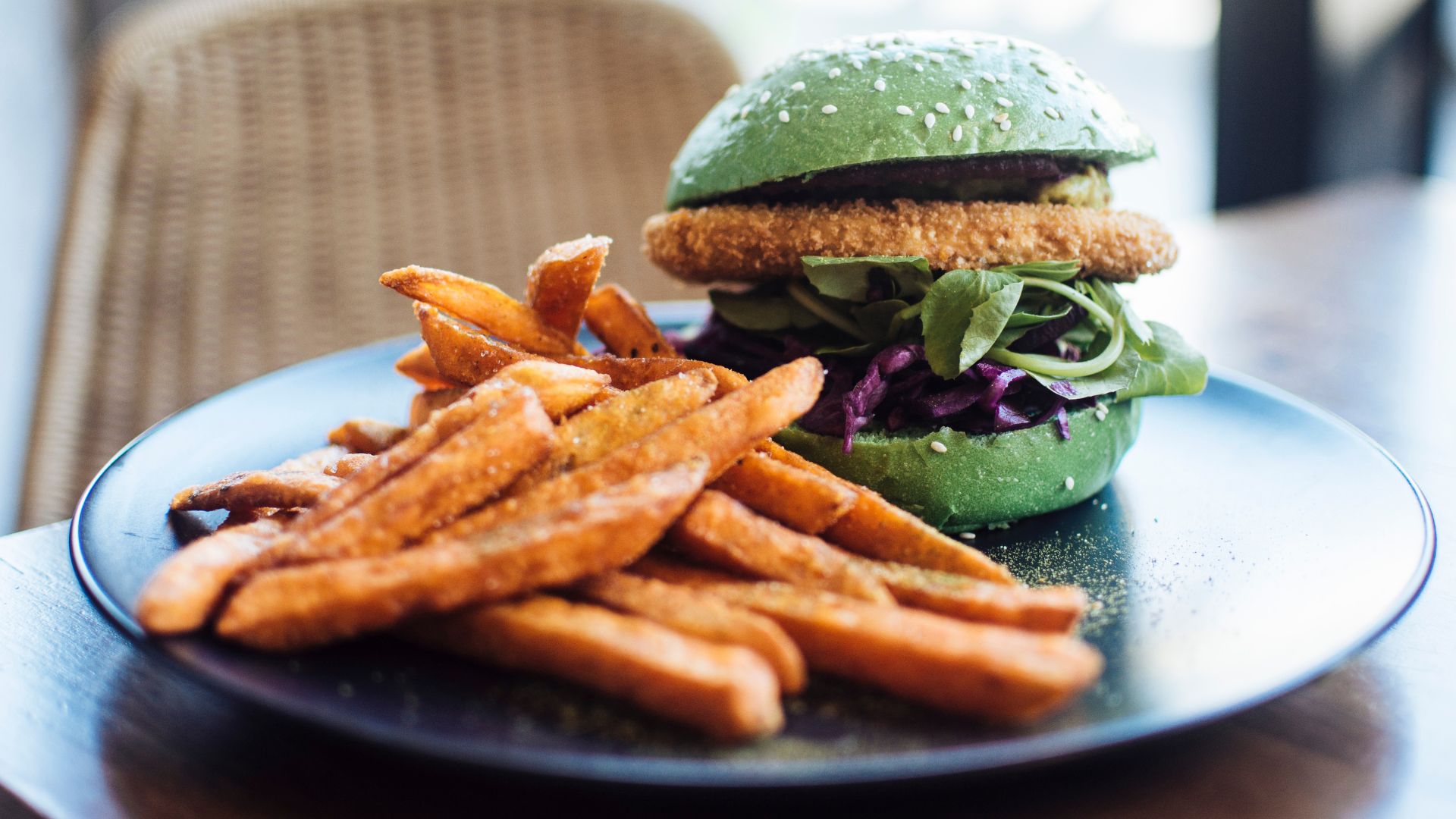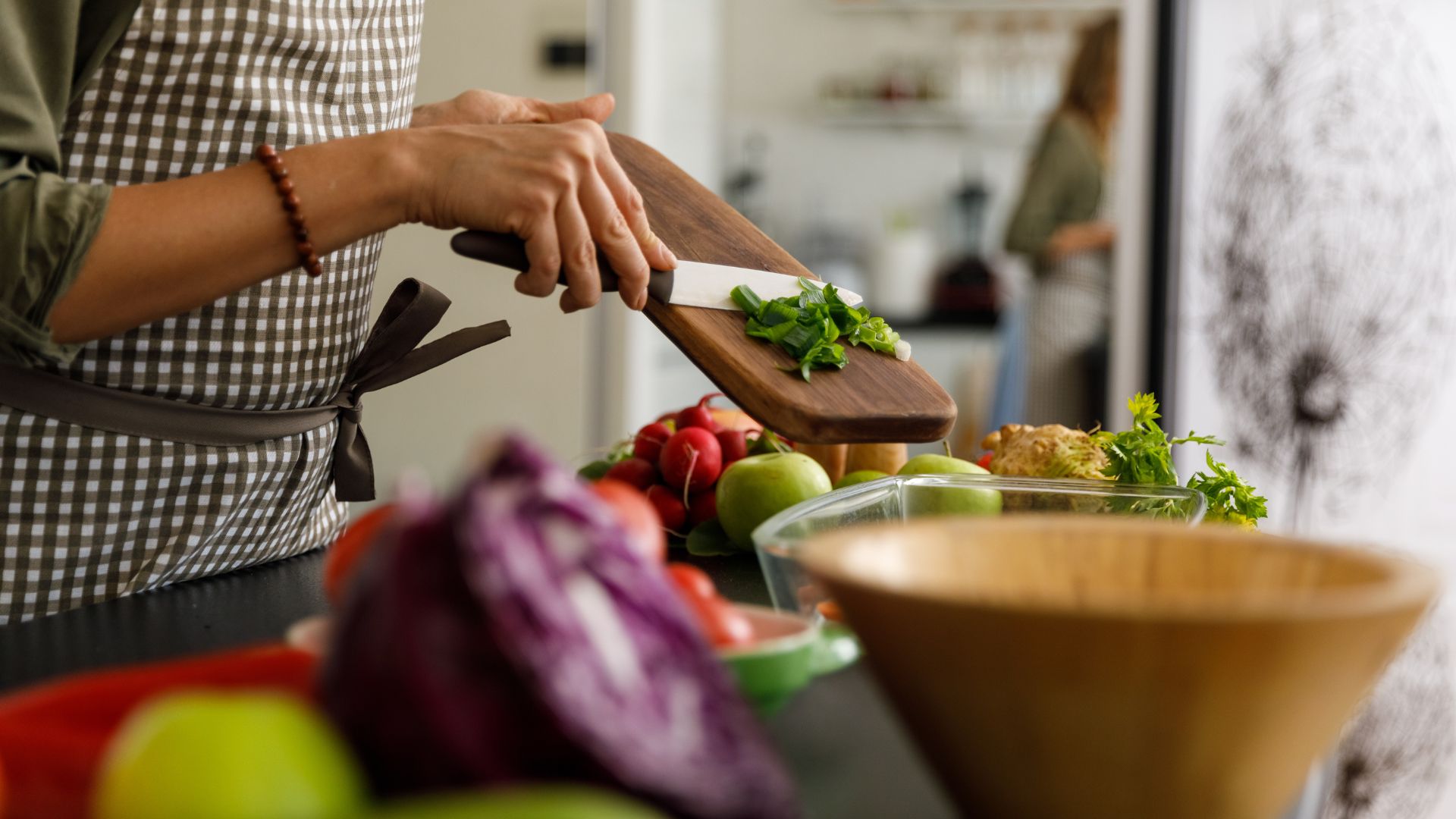How to start a plant-based diet with 11 easy swaps recommended by a nutritionist
Learn how to start a plant-based diet from scratch with these simple expert-approved tips


Want to start eating fewer animal products but not sure how to start a plant-based diet? If you're looking to move to a vegetarian or vegan diet this year, you certainly won't be the only one as we're learning more about the benefits of the diet for both our health and the environment.
Making big lifestyle changes isn't always easy, especially when it comes to what we eat. Changing our diets means changing our daily habits, from what we keep in the fridge and what we choose off a restaurant menu to watching out for the hidden animal products in our favorite foods.
But with new research on veganism and the environment suggesting we could reduce diet-related greenhouse gas emissions by 49% by going plant-based and further studies showing the amazing impact a vegetarian or vegan diet can have on our heart health, there's really no better time to consider learning how to start a plant-based diet, or at least trying the 80/20 diet rule and cutting back on how many animal products we eat.
How to start a plant-based diet
1. Think about the foods you enjoy
Whether you're looking to set a new resolution for the year, have been dieting and not losing weight, or have been advised to rethink your diet, it will always be easier to make changes to your lifestyle if you enjoy the process. When it comes to swapping to a plant-based diet, this means choosing foods that you actually enjoy cooking and eating.
"A plant-based diet can include vegetables, fruit, pulses, grains, nuts, and legumes, as well as soy products and other meat substitutes," says nutritionist Signe Svanfeldt, so aim to pick from these groups to start off with.
When you're in the grocery store, instead of heading to the meat, poultry, fish, or dairy aisles, check out the sections next to it that include great substitutes - including brands like Quorn, Beyond Meat, This Is Not, and similar, as many of them taste almost the same as the real thing.

2. Vary your diet
However, when choosing the foods you love on your journey to learning how to start a plant-based diet, be sure to include plenty from across the nutritional spectrum. "When excluding certain food groups from your diet, it's of extra importance that you vary the intake of the food groups included to have all the nutrients required," Svanfeldt says.
Sign up to our free daily email for the latest royal and entertainment news, interesting opinion, expert advice on styling and beauty trends, and no-nonsense guides to the health and wellness questions you want answered.
For example, to get enough fiber in your diet, you may want to prioritize vegetables like carrots, broccoli, beetroot, and cauliflower. Soy, peas, beans, lentils, and seeds are typically higher in calcium. While chia seeds, flaxseeds, edamame, and even sea moss will be a quality source of omega-3, which is otherwise typically found in fish.
3. Combine two or more sources of protein
The only issue with cutting out certain foods from your diet is that you have to make up for the shortfall in vitamins with other, more nutritious food items. For example, those following a plant-based diet may struggle to get enough protein.
Protein is made up of amino acids, of which nine are essential, explains Svanfeldt. "Animal protein often contains all nine of them, which means they have full protein value," she explains. "Vegan protein sources rarely have all nine of the essential amino acids but by combining two or more sources, such as beans and oats, you will get all nine essential amino acids, and full protein value."
This could be as simple as always including beans and legumes in your meals as these are both strong sources of protein. Alternatively, you could opt for one of the best protein powders for women as a snack to see you through the day.

4. Prioritize iron
Along with protein, iron is a vitamin that's frequently lacking in many plant-based diets, explains Svanfeldt. While foods such as spinach, sweet potato, and broccoli are high in iron, they're not as efficient as iron from animal-based sources. "This is because our bodies absorb animal-based iron easier than plant-based iron and animal-based iron products tend to have higher iron content compared to plant-based."
However, there are things you can do to help your body absorb the iron:
- Increase your vitamin C intake: "Combine a source of vitamin C with your plant-based iron as vitamin C aids iron absorption," Svanfeldt says.
- Swap to sourdough: "Choose sourdough bread over regular bread," she suggests. "The fermentation process in sourdough bread breaks down phytic acid, which is present in many types of grains. Phytic acid, when present, inhibits iron absorption, so when it’s broken down the iron becomes more available."
- Cook in iron: "Cook your food in an iron casserole dish or one of the best cast iron skillets as this can raise the iron content in the food cooked in it."
5. Plan your meals
No matter the diet changes you're looking to make, meal planning and prepping can be incredibly helpful. Combined with using one of the best habit tracker apps, it can help you to stay the course and maintain your new diet - especially when time isn't on your side.
Research from the University of Paris suggests that those who regularly plan their meals tend to have higher food variety in their diet and a lower risk of becoming overweight or obese.
6. Prioritize easy swaps
Just as choosing foods you enjoy will make big lifestyle changes easier, making simple swaps at the grocery store or when you're shopping online will make the process of learning how to start a plant-based diet much easier.
If you're looking to swap your favorite meaty meals for vegetarian or vegan alternatives, Svanfeldt offers the following:
Easy swaps for a plant-based diet
- For burger patties: Instead of beef, make your own with your choice of beans and oats combined.
- For milk: Milk alternatives of all kinds, including oat, soy, and almond make great swaps for cow's milk.
- For Bolognese and chili: Swap the meat mince for lentils, combined with onions, carrots, other vegetables, and beans.
- For eggs: Scramble up some tofu in a pan the same way you would make your scrambled eggs, swapping any cow's milk for plant-based milk.
- For fajitas: Swap your poultry or meat for tofu, seasoned or glazed in the same way you would have your chicken or beef.
- For cream-based desserts: If you're making a chocolate mousse, for example, swap your cream for silken tofu.
- For milk chocolate: Milk and white chocolate contain cow's milk typically so tend not to be plant-based, however dark chocolate (try 70% cacao or more) is vegan.
- For butter: Vegan butter is also available but nut butter will make for a tasty, protein-rich swap.
- For yogurt: Silken tofu makes for a great alternative to yogurt in smoothies and bowls.
- For sauces: You can buy vegan mayonnaise and sauces from most grocery stores but if you're looking for a natural alternative, try hummus.
- For honey: Agave syrup is a great alternative to honey, which is not a plant-based food.

Grace Walsh is woman&home's Health Channel Editor, working across the areas of fitness, nutrition, sleep, mental health, relationships, and sex. She is also a qualified fitness instructor. In 2025, she will be taking on her third marathon in Brighton, completing her first ultra marathon, and qualifying as a certified personal trainer and nutrition coach.
A digital journalist with over seven years experience as a writer and editor for UK publications, Grace has covered (almost) everything in the world of health and wellbeing with bylines in Cosmopolitan, Red, The i Paper, GoodtoKnow, and more.